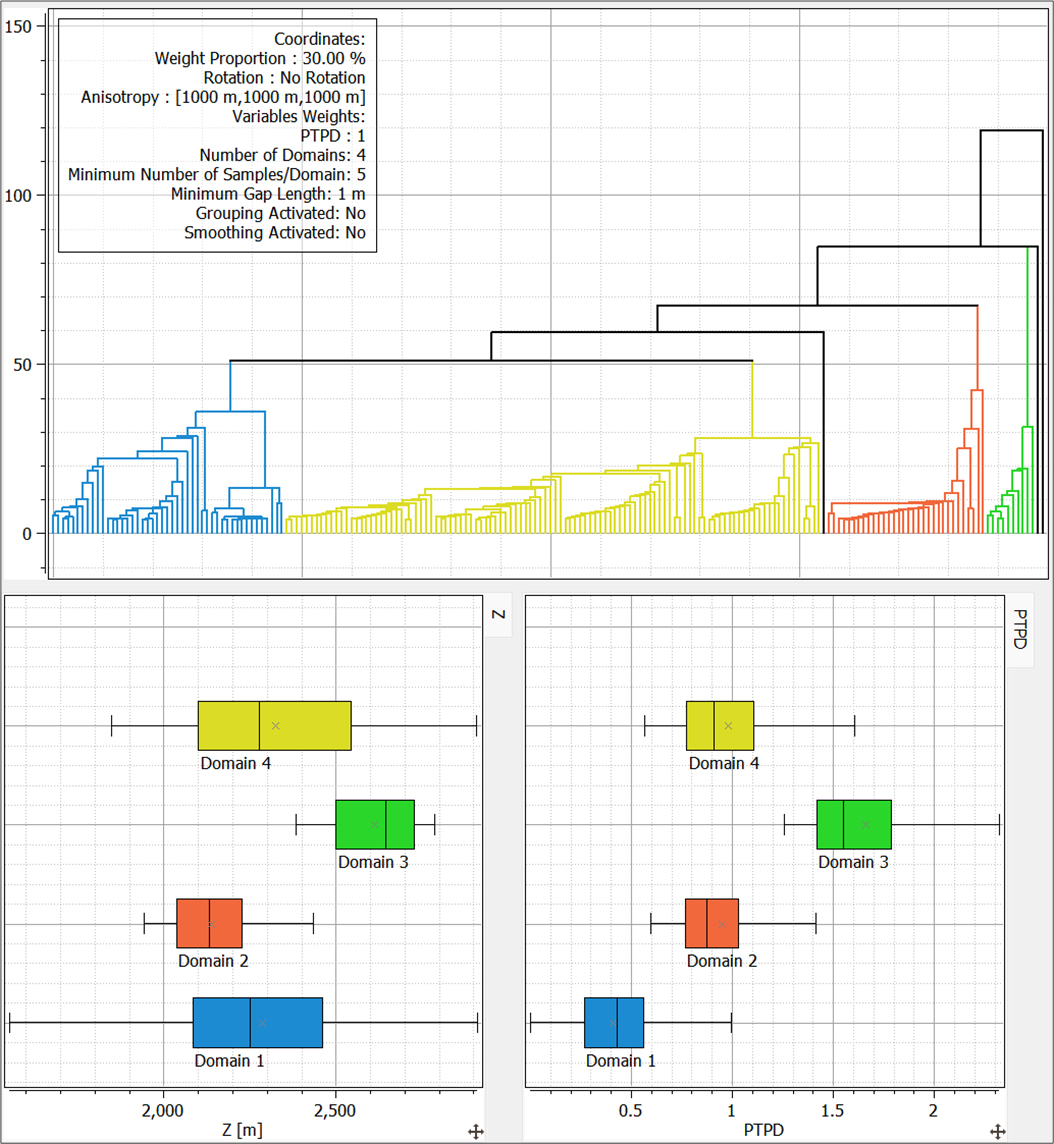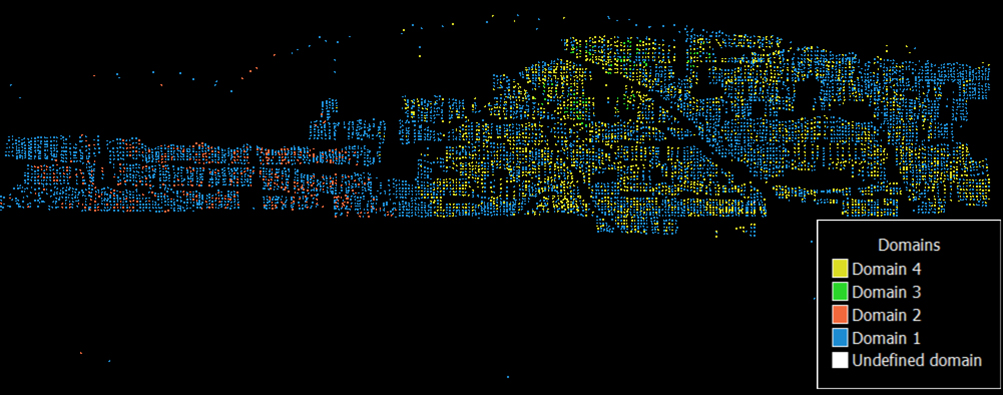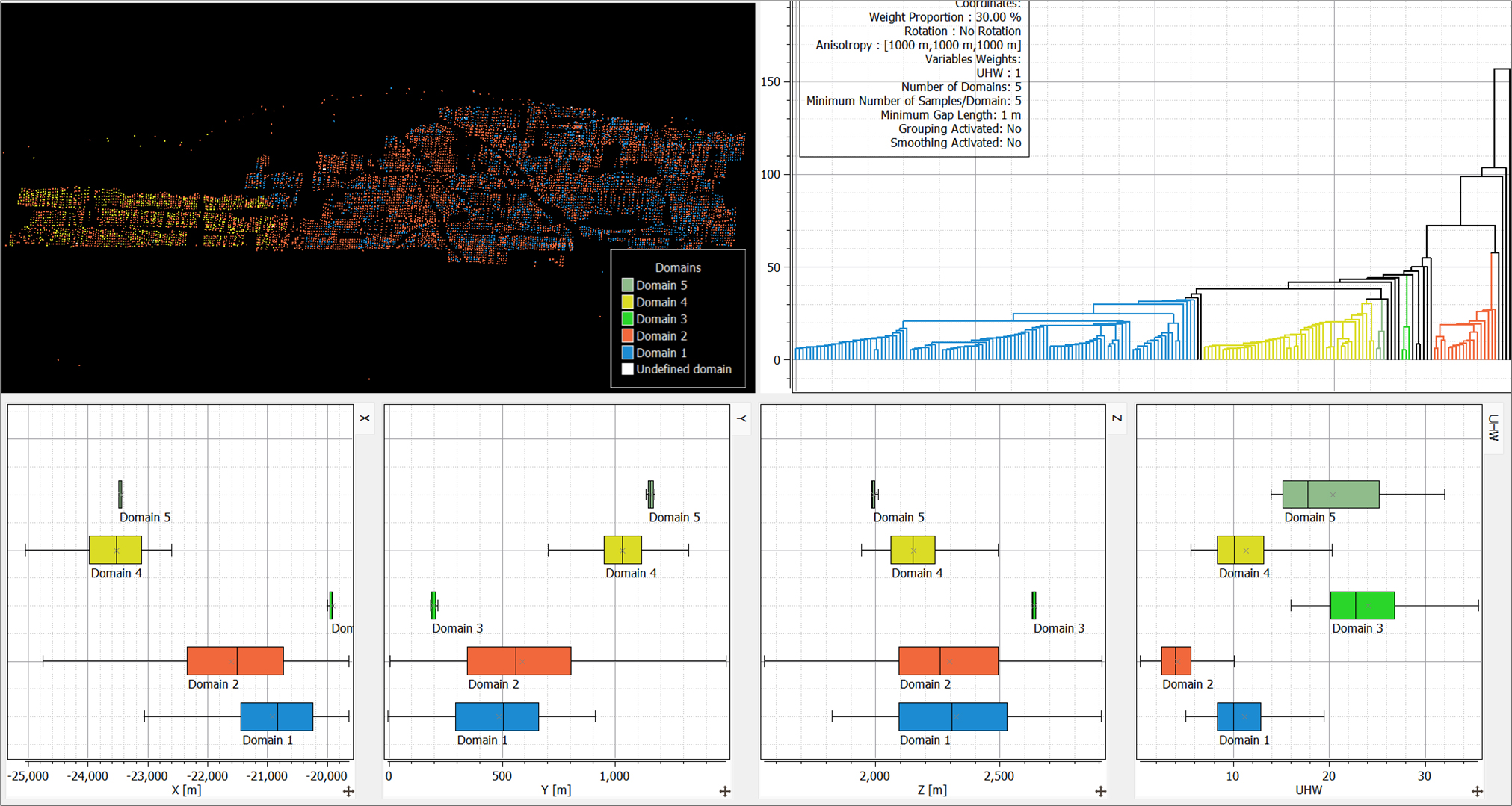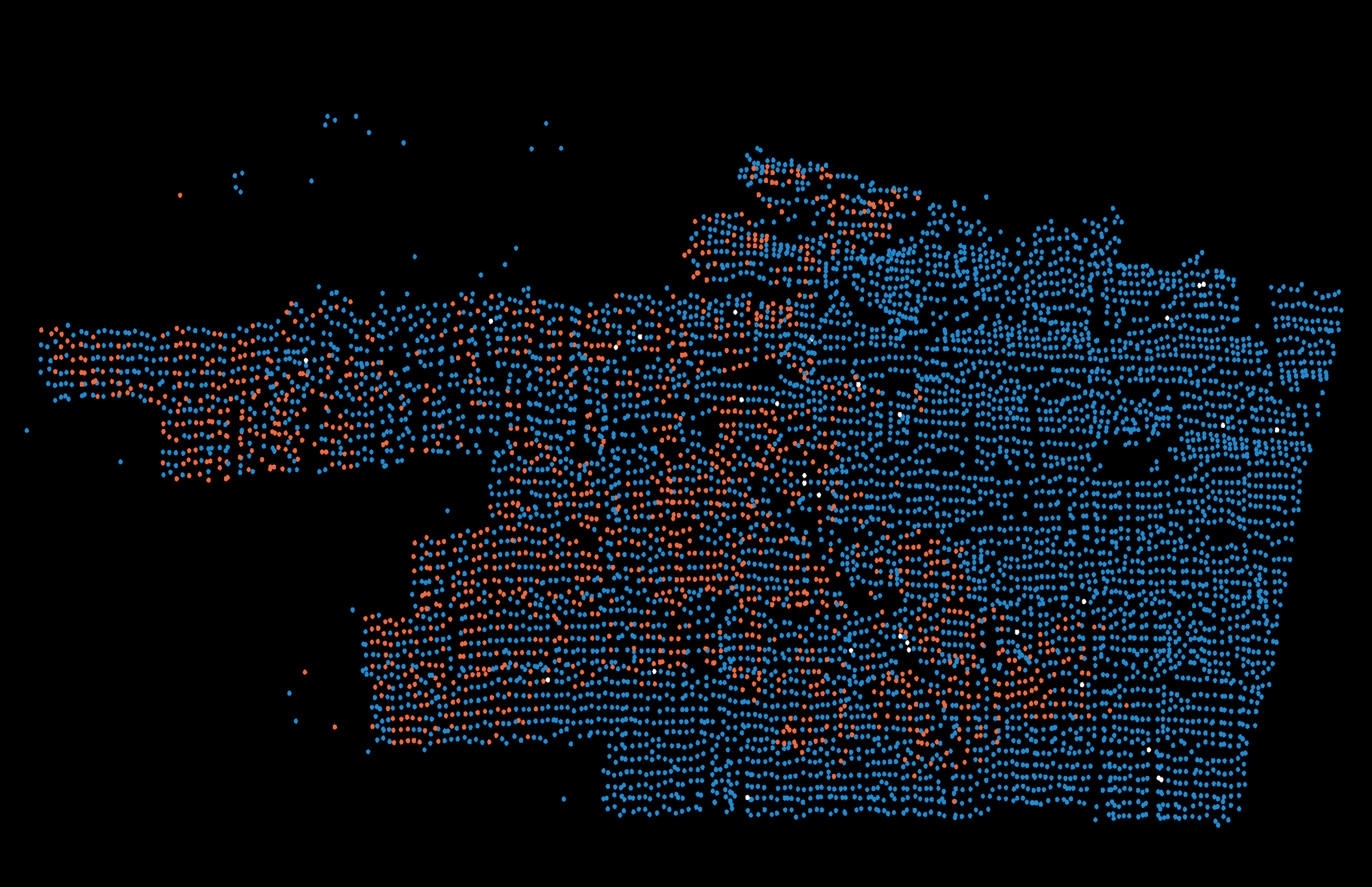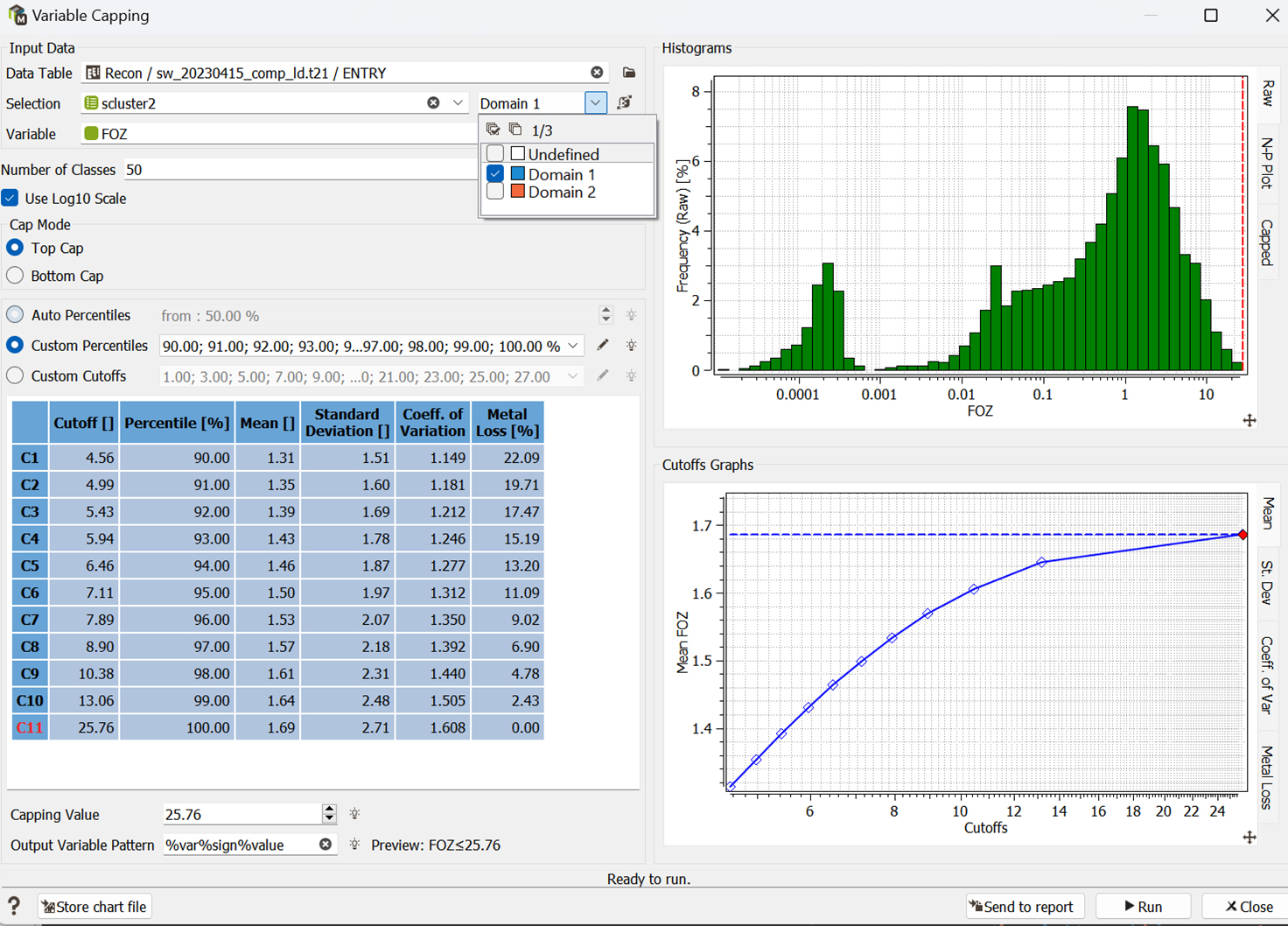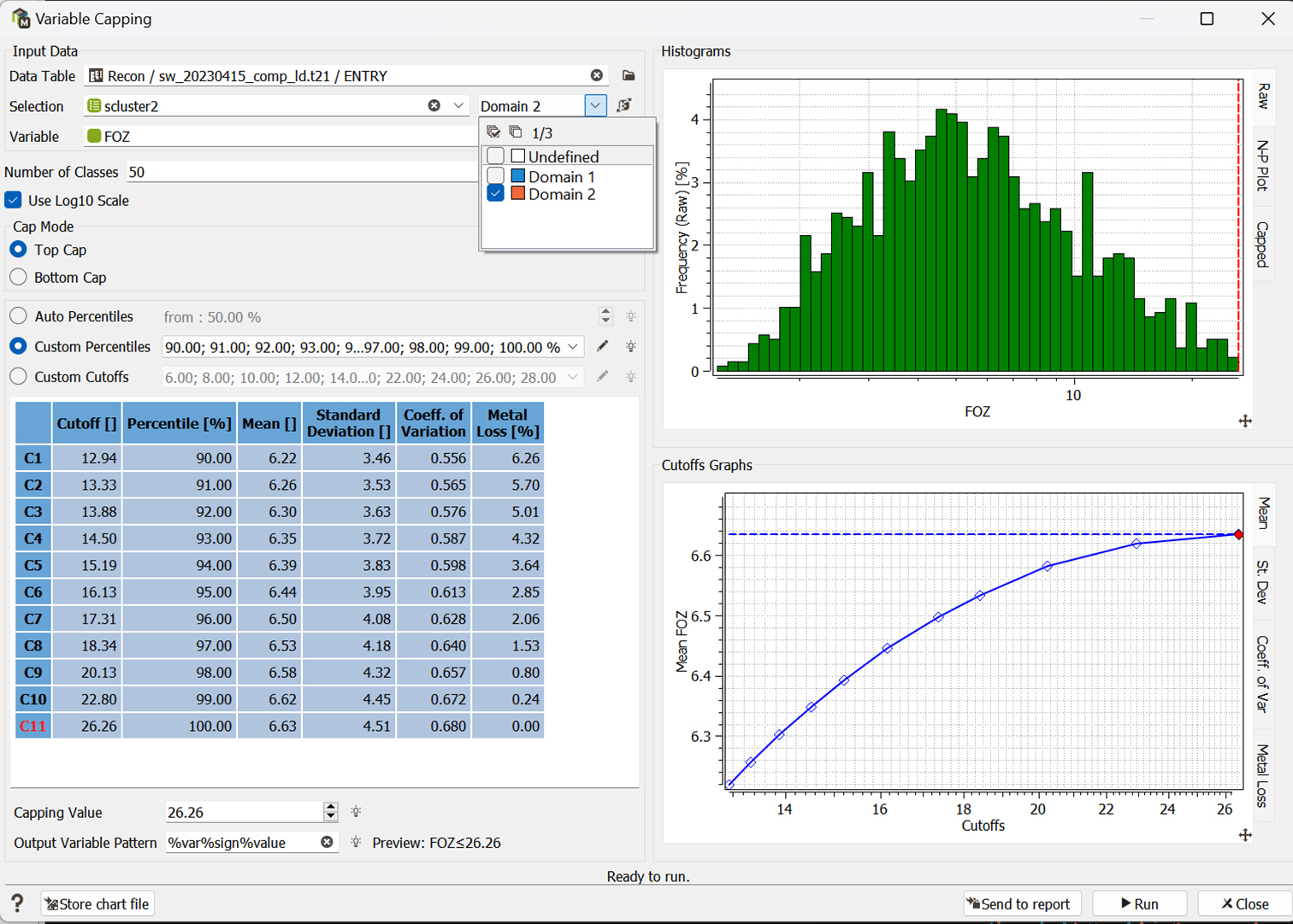The Isatis.neo sample clustering tool identifies finely two complex geological domains in a platinum group metal deposit.
Geological domaining is a crucial step in the resource modeling process. However, domains can be challenging to identify when grade populations are too intricate. Sibanye-Stillwater faced one such challenge for a PGM (platinum group metals) deposit with complex low-grade and very high-grade zones and several faults. They opted for the Isatis.neo clustering tool to overcome it, combining grades and the orebody thickness. They generated two domains that successfully separated the two grade populations. Without this, small areas of extreme grades would not have been considered in the estimation, and planning would not have targeted them.
Sibanye-Stillwater is a mining and metals processing group that operates in multiple countries and has a wide range of projects and investments. The company was founded in 2013 and is present in Argentina, Australia, Finland, France, India, South Africa, the USA, and Zimbabwe. They deal in various commodities such as gold, platinum, copper, zinc, lead, and lithium.
Massive grade spots, how to take them into account in planning?
Sibanye-Stillwater is working on a PGM orebody extension project close to its Stillwater and East Boulder mines in Montana. The project presents massive grades that are distributed in many spots throughout the deposit amidst lower grades. Faults also cut it. All this makes domaining challenging.
“Several faults cut the orebody, but we were unsure which to use to generate the domaining. We were seeking a solution that would allow us to identify geological domains undoubtedly and objectively.”
Antonio Umpire, Unit Manager Group Resource Estimation & Reporting
Isatis.neo clustering tool is the solution.
Isatis.neo offers a powerful sample clustering tool based on geostatistical hierarchical clustering. It quickly and automatically groups borehole samples into homogeneous classes based on several continuous and categorical variables. Users can select the number of classes they want data to be grouped into, the variables used for the classification, and the weights to assign them.
A process in several steps.
Antonio Umpire, who is familiar with Isatis.neo and its predecessor, Isatis, used the sample clustering tool to categorize samples into a specific number of domains. He first tried three domains based on platinum-palladium grade values and identified a first area with low grades. He then tried four domains, which yielded a clearer picture. Finally, he tried five domains by introducing the undiluted horizontal width into the computations to validate his assumptions. On this basis, he could accurately and rapidly pinpoint the two groups of samples, one with low values and the second with extremely high values.
The Isatis.neo clustering tool automatically groups samples according to their similarity on different variables. In this case, four classes were used for the clustering analysis. Clusters are displayed as a dendrogram.
2D cross-section showing the domaining in 4 classes defined by Isatis.neo automated sample clustering. The west part clearly identifies the lower grades.
Domaining using the “undiluted horizontal width” variable. It validates domaining computed only with PTPD data.
Optimized capping
Antonio Umpire applied a similar principle in another mine block to determine optimized capping values for two grade populations, which were, again, complexly distributed. This technique enabled him to efficiently and objectively separate samples with normal grades from those with extremely high grades and define a suitable capping value for each population.
2D cross-section showing the two intricated domains.
Isatis.neo determines the optimized capping value for each domain.
The results: better resources, improved planning
“Without this detailed domaining, the little spots of extreme grades would not have been considered in the estimation, and the planning would not have met the targets. Using this split, planning will be done accordingly.”
Antonio Umpire
